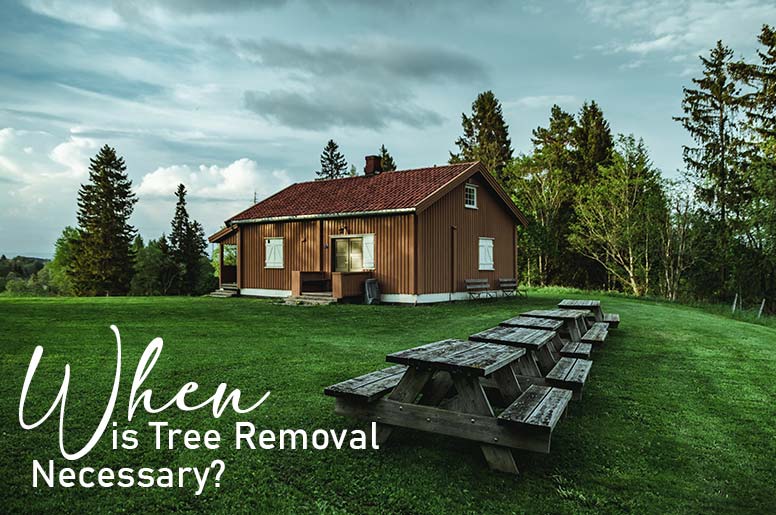7 Situations When A Tree Should Be Removed
Trees offer many practical benefits to property owners. Not only do they absorb pollutants and provide oxygen, but they can also boost a property’s value. In some cases, however, a tree can cause problems that require its removal. So when is tree removal necessary and what steps should you take?
In this guide, we’ll help you determine when a tree must finally be removed to avoid potentially costly problems and safety hazards down the road.
When is Tree Removal Necessary For My Property?
1. The tree is dead.
Aside from the obvious fact that dead trees can be unsightly, they can also be a safety hazard. Even if they don’t have any hanging branches, it won’t take much to damage their structure and cause the tree to tip over altogether. The tree may reach its breaking point during a strong storm, or it can come down on its own, making it very unpredictable and dangerous.
2. There is too much damage from a storm.
Strong winds can cause critical damage to a tree. This can cause it to eventually die or create unnecessary risks. It can be tricky to spot a dying tree. A local certified arborist can perform a thorough inspection and search for signs of root failure, internal decay, or a crown twist after a storm.
3. The tree is too close to a property or structure.
While it’s nice to enjoy the shade of a tree that’s close to your house or commercial building, have in mind that falling branches or aggressive root systems can lead to very expensive repair costs.
This is why, if you have a tree that’s particularly close to a building, it’s best to err on the side of caution and have an arborist perform a tree risk assessment. This can give you a better idea of how and when the tree should be removed.
4. The tree is leaning dangerously.
Leaning trees are more of a hazard than those that are growing vertically. If the lean happened suddenly, it can indicate a weakening or breakage in the roots. A tree that’s leaning more than 15% from a vertical position should be removed as soon as possible. It’s also possible to save a leaning tree, but if too much of the roots are exposed, it’s best to get tree removal services.
5. The tree shows signs of internal decay.
Mushrooms growing on the brittle bark, discoloured leaves, and falling branches can indicate the presence of tree rot, which can weaken the tree’s structure. As mentioned in previous points, a weakened structure can be dangerous as it can mean branches or the tree itself may fall at any time.
A pest infestation can also be a cause of tree damage. Pests and fungal diseases are both signs a tree needs to be removed before these problems spread to other trees.
6. There are too many trees on your property.
Tree removal is essential for keeping your property picturesque. If you need help on how to decide what trees to cut down, check first that there isn’t any endangered species by calling your local arborist in Sydney. They can also identify which trees are suffering from infestations and disease.
7. The tree is shedding too many leaves.
Some trees naturally shed more leaves in the summer. While this can be loads of fun for the kids and your pets, this can be a bother for you. Tree removal can be a permanent solution so you can enjoy a more manageable lawn.
Takeaway
There can also be other reasons to hire tree removal services, such as if the tree is in the way of a spectacular view or a development project. Because trees play an important part in providing fresh, breathable air, however, it’s best not to remove trees unless truly necessary.
Do you own a commercial property and would like more information on when is tree removal necessary and beneficial for your business? Talk to a qualified arborist from Tall Timbers Tree Services for professional insights into your tree situation. Call us today at 0414 627 627.

